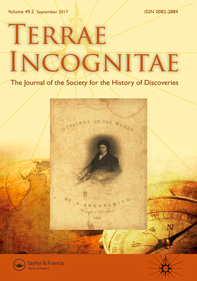The Representation of the West Indies in Early Iberian Cartography: a Cartometric Approach
- Author(s)
- Year
- 2015
- Journal
Terrae Incognitae, 47(1)
- Nr. of Pages
- 10-32

Abstract
The earliest extant cartographic representation of the Americas is on the 1500 planisphere by the Cantabrian pilot Juan de la Cosa. On this nautical chart, the New World is represented according to the information collected by Spanish, English and Portuguese explorers in the last years of the fifteenth century. One of its most striking features is the large size of the Antilles, which are represented with a remarkably exaggerated scale relative to Europe. This feature was later replicated in the Cantino (1502), the Caverio (c. 1504) and many other planispheres of the first quarter of the sixteenth century. In this article, the results of a cartometric analysis of a sample of nautical charts, from 1500 to 1525, are presented and discussed with the aim to better understand how the representation of the Caribbean Sea evolved over time. The analysis has shown that the earliest charts in which the mistake in proportion was fully corrected are the Castiglione and the Salviati planispheres of 1525, both produced by the Casa de Contratación of Seville. It is further concluded that the Spanish cartographic production of the Casa was the object of a considerable improvement, in quantity and quality, as a result of the Magellan-Elcano circumnavigation of 1519–22. This was made possible by the technical assistance of Portuguese cartographers and pilots during the preparation and execution of the voyage.